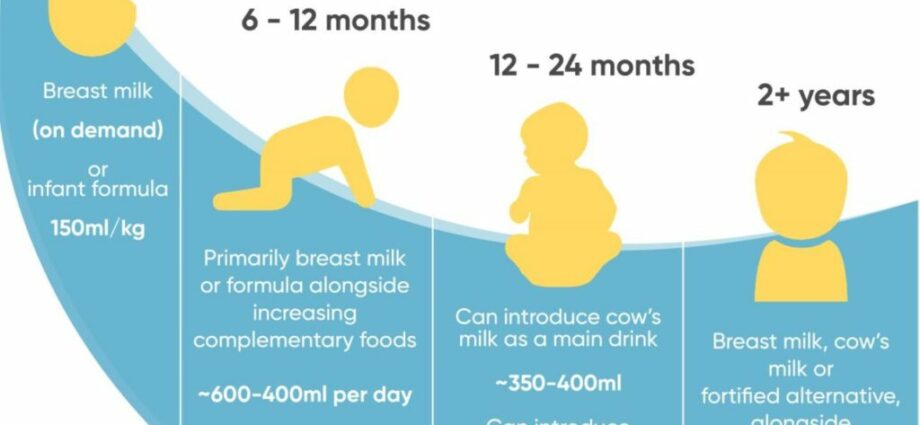Contents
Are you gradually starting to diversify your diet but still doubt whether you can replace feedings or bottles of infant milk with cow’s milk? Here’s all you need to know.
Growth milk: until what age?
In principle, cow’s milk can be introduced into baby’s diet from the age of 1 year. Before this stage, it is essential to give your child breast milk or infant milk (first age milk first, then follow-on milk) with a larger supply of iron and vitamins, essential for its growth.
In video: Which milks from birth to 3 years old?
Why not give cow’s milk to a newborn baby?
Growth milk perfectly meets the nutritional needs of children between 1 and 3 years old, which is not the case with cow’s milk or any other milk that is not certified by the European Union as infant milk (especially vegetable milks, sheep’s milk, rice milks, etc.). Compared to classic cow’s milk, growth milk is much richer in iron, essential fatty acids (especially omega 3), vitamin D and zinc.
When to give baby cow’s milk: what age is best?
So it is better to wait at least the first year, or even the child’s 3 years, before switching exclusively to cow’s milk. Many pediatricians recommend a daily consumption of 500 ml of growth milk – to be modulated according to the needs and weight of the child – up to 3 years. The reason ? For children under 3 years old, growth milk is the main source of iron.
Baby’s diarrhea: allergy or intolerance to lactose?
If the baby refuses his bottle, we can opt for yoghurts made from growth milk and make his purees, gratins, cakes or flans with this type of milk. If your infant has diarrhea, stomach pain, or reflux, see your pediatrician to make sure they are not lactose intolerant.
What does cow’s milk contain?
Cow’s milk is the main source of calcium in children, calcium which plays an essential role in the formation of bones and the consolidation of the skeleton. Cow’s milk is also a source of protein, phosphorus, magnesium and vitamins A, D and B12. But unlike breast milk and growth milk, it contains little iron. It can therefore only enter the baby’s diet at the time of dietary diversification, when other foods meet the baby’s iron needs (red meat, eggs, pulses, etc.).
Calcium equivalents A bowl of whole milk contains 300 mg of calcium, which is as much as 2 yogurts or 300 g of cottage cheese or 30 g of Gruyere. |
Whole or semi-skimmed: which cow’s milk to choose for your child?
It is recommended favor whole milk rather than semi-skimmed or skimmed, because it contains more vitamins A and D, as well as fats necessary for the good growth of the children.
How to switch from infant milk to another milk?
If the baby has had a hard time adapting to the taste of milk other than infant milk, you can try either to give it hot, or to give it cold, or to dissolve a little chocolate or honey, for example. .










